Related Research Articles
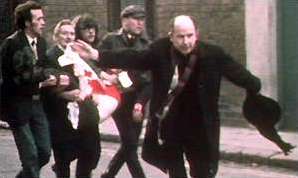
Bloody Sunday, or the Bogside Massacre, was a massacre on 30 January 1972 when British soldiers shot 26 unarmed civilians during a protest march in the Bogside area of Derry, Northern Ireland. Thirteen men were killed outright and the death of another man four months later was attributed to gunshot injuries from the incident. Many of the victims were shot while fleeing from the soldiers, and some were shot while trying to help the wounded. Other protesters were injured by shrapnel, rubber bullets, or batons; two were run down by British Army vehicles; and some were beaten. All of those shot were Catholics. The march had been organised by the Northern Ireland Civil Rights Association (NICRA) to protest against internment without trial. The soldiers were from the 1st Battalion of the Parachute Regiment, the same battalion implicated in the Ballymurphy massacre several months before.

The Provisional Irish Republican Army, officially known as the Irish Republican Army and informally known as the Provos, was an Irish republican paramilitary force that sought to end British rule in Northern Ireland, facilitate Irish reunification and bring about an independent republic encompassing all of Ireland. It was the most active republican paramilitary group during the Troubles. It argued that the all-island Irish Republic continued to exist, and it saw itself as that state's army, the sole legitimate successor to the original IRA from the Irish War of Independence. It was designated a terrorist organisation in the United Kingdom and an unlawful organisation in the Republic of Ireland, both of whose authority it rejected.
Provisional Irish Republican Army arms importation in forms of both firearms and explosives began in the early 1970s during the Troubles. With these weapons it conducted an armed campaign against the British state in Northern Ireland.
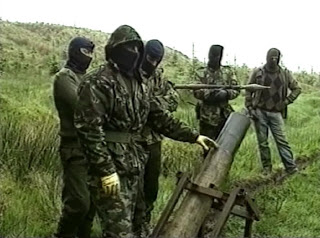
From 1969 until 1997, the Provisional Irish Republican Army (IRA) conducted an armed paramilitary campaign primarily in Northern Ireland and England, aimed at ending British rule in Northern Ireland in order to create a united Ireland.

The Loughgall ambush took place on 8 May 1987 in the village of Loughgall, County Armagh, Northern Ireland. An eight-man unit of the Provisional Irish Republican Army (IRA) launched an attack on the Royal Ulster Constabulary (RUC) base in the village. An IRA member drove a digger with a bomb in its bucket through the perimeter fence, while the rest of the unit arrived in a van and fired on the building. The bomb exploded and destroyed almost half of the base. Soldiers from the British Army's Special Air Service (SAS) then returned fire both from within the base and from hidden positions around it in a pre-planned ambush, killing all of the attackers. Two of them were subsequently found to have been unarmed when they were killed.
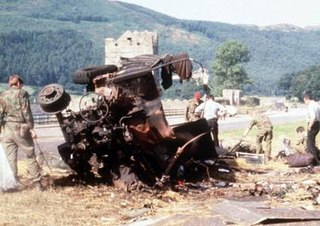
The Warrenpoint ambush, also known as the Narrow Water ambush, the Warrenpoint massacre or the Narrow Water massacre, was a guerrilla attack by the Provisional Irish Republican Army (IRA) on 27 August 1979. The IRA's South Armagh Brigade ambushed a British Army convoy with two large roadside bombs at Narrow Water Castle outside Warrenpoint, Northern Ireland. The first bomb was aimed at the convoy itself, and the second targeted the incoming reinforcements and the incident command point (ICP) set up to deal with the incident. IRA volunteers hidden in nearby woodland also allegedly fired on the troops, who returned fire. The castle is on the banks of the Newry River, which marks the border between Northern Ireland and the Republic of Ireland.
Antoine Mac Giolla Bhrighde, English Tony or Anthony MacBride, was a Provisional Irish Republican Army (IRA) volunteer from Desertmartin, County Londonderry, Northern Ireland. He was shot dead by the British Army in 1984 whilst engaged in an attack on the Royal Ulster Constabulary.

Operation Banner was the operational name for the British Armed Forces' operation in Northern Ireland from 1969 to 2007, as part of the Troubles. It was the longest continuous deployment in British military history. The British Army was initially deployed, at the request of the unionist government of Northern Ireland, in response to the August 1969 riots. Its role was to support the Royal Ulster Constabulary (RUC) and to assert the authority of the British government in Northern Ireland. This involved counter-insurgency and supporting the police in carrying out internal security duties such as guarding key points, mounting checkpoints and patrols, carrying out raids and searches, riot control and bomb disposal. More than 300,000 soldiers served in Operation Banner. At the peak of the operation in the 1970s, about 21,000 British troops were deployed, most of them from Great Britain. As part of the operation, a new locally-recruited regiment was also formed: the Ulster Defence Regiment (UDR).
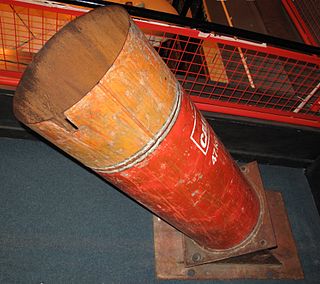
Barrack buster is the colloquial name given to several improvised mortars, developed in the 1990s by the engineering unit of the Provisional Irish Republican Army (IRA).

The South Armagh Sniper is the generic name given to the members of the Provisional Irish Republican Army's (IRA) South Armagh Brigade who conducted a sniping campaign against the British Army from 1990 to 1997. The campaign is notable for the snipers' use of .50 BMG calibre Barrett M82 and M90 long-range rifles in some of the shootings.

The Bishopsgate bombing occurred on 24 April 1993, when the Provisional Irish Republican Army (IRA) detonated a powerful truck bomb on Bishopsgate, a major thoroughfare in London's financial district, the City of London. Telephoned warnings were sent about an hour beforehand, but a news photographer was killed in the blast and 44 people were injured, with fatalities minimised due to its occurring on a Saturday. The blast destroyed the nearby St Ethelburga's church and wrecked Liverpool Street station and the NatWest Tower.

The Downing Street mortar attack was carried out by the Provisional Irish Republican Army (IRA) on 7 February 1991. The IRA launched three homemade mortar shells at 10 Downing Street, London, the headquarters of the British government, in an attempt to assassinate Prime Minister John Major and his war cabinet, who were meeting to discuss the Gulf War.
Sir Ambrose Joseph McGonigal, MC was a High Court Judge in Northern Ireland.
The Ballygawley bus bombing was a roadside bomb attack by the Provisional Irish Republican Army (IRA) on a bus carrying British soldiers in Northern Ireland. It occurred in the early hours of 20 August 1988 in the townland of Curr near Ballygawley, County Tyrone. The attack killed eight soldiers and wounded 28. In the wake of the bombing, the British Army began ferrying its troops in and out of County Tyrone by helicopter.
The Military Reaction Force, Military Reconnaissance Force or Mobile Reconnaissance Force (MRF) was a covert intelligence-gathering and counterinsurgency unit of the British Army active in Northern Ireland during the Troubles. The unit was formed during the summer of 1971 and operated until late 1972 or early 1973. MRF teams operated in plain clothes and civilian vehicles, equipped with pistols and submachine guns. They were tasked with tracking and arresting or killing members of the Provisional Irish Republican Army (IRA). It is alleged that the MRF killed a number of Catholic civilians in drive-by shootings.
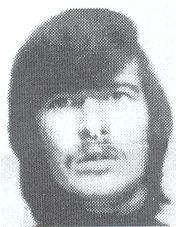
Peter Joseph Cleary was an Irish republican and a leading member of the 1st Battalion of the Provisional Irish Republican Army (IRA)'s South Armagh Brigade. He held the rank of Staff Officer and served as the unit's treasurer. He was implicated by journalist and author Joe Tiernan in the killing of Ulster Defence Regiment (UDR) corporal and alleged Ulster Volunteer Force (UVF) member Robert McConnell. Ten days after McConnell's killing, Cleary was shot dead by the Special Air Service (SAS) after being arrested at the home of his girlfriend outside Forkhill. He was the first person in Northern Ireland to be killed by the SAS, following the admission of their deployment there in January 1976. According to the SAS, he was shot after attempting to take the rifle from the officer who was guarding him in a bid to escape.

The Clonoe Ambush was a military action between the British Army and the Provisional Irish Republican Army (IRA) that occurred during The Troubles in Northern Ireland. On 16 February 1992, an IRA unit attacked the Royal Ulster Constabulary (RUC) security base in the village of Coalisland in County Tyrone, and was ambushed shortly afterwards by the Special Air Service (SAS) in the grounds of a church in the village of Clonoe whilst attempting to make its escape, resulting in several IRA fatalities.

On 19 March 1994, a British Army Lynx helicopter was shot down by the Provisional Irish Republican Army (IRA) in Northern Ireland. A unit of the IRA's South Armagh Brigade fired a heavy improvised mortar at the British Army base in Crossmaglen, County Armagh. The mortar round hit and shot down the helicopter, serial number ZD275, while it was hovering over the helipad. Three British soldiers and a Royal Ulster Constabulary (RUC) member were wounded.

The Mullacreevie ambush took place on 1 March 1991, when a mobile patrol of the Ulster Defence Regiment composed of two Land Rover vehicles was attacked with an improvised horizontal mortar by a Provisional IRA active service unit from the North Armagh Brigade while passing near Mullacreevie housing estate, on the west side of Armagh City. One member of the UDR was killed instantly when the leading Land Rover was hit, while another died of wounds two days later. Two other soldiers were maimed for life.
References
- ↑ "Who Dares Wins – Little, Brown Book Group". Littlebrown.co.uk. Retrieved 28 September 2011.
- ↑ "Tony Geraghty homepage". tony-geraghty.com.
- ↑ Geraghty, Tony (2000). The Irish War: The Hidden Conflict Between the IRA and British Intelligence. HarperCollins. pp. xx–xxi. ISBN 978-0-00-638674-2.
- ↑ The Irish War: The Hidden Conflict Between the IRA and British Intelligence, pp. 33–39
- ↑ Geraghty, Tony (11 November 2000). The Irish War: The Hidden Conflict Between the IRA and British Intelligence. ISBN 9780801871177 . Retrieved 28 September 2011.
- ↑ "Tony Geraghty". Intellit.muskingum.edu. Retrieved 28 September 2011.
- 1 2 Maguire, Kevin (16 October 2000). "Writers: guilty until found innocent". New Statesman. Retrieved 3 September 2022.
- ↑ Duncan Campbell (2 November 2000). "Duncan Campbell, The Guardian, 2 November 2000". The Guardian. London. Retrieved 28 September 2011.
- ↑ "The Queen v. Wylde: The camera in the grocery shop". The Guardian. Retrieved 5 October 2015.
- ↑ "British Journalism Review Vol. 10, No. 2, 1999 – The sub-secret underworld of the D-Notice business". Bjr.org.uk. Retrieved 28 September 2011.
- ↑ Norton-Taylor, Richard (23 June 1999). "Secrets breach denied". The Guardian. London. Retrieved 25 May 2010.
☆